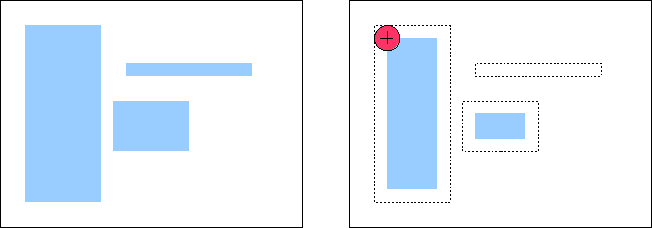Erosion (image processing)
Erosion (from Latin : erodere = to cut away) is a basic operation in morphological image processing .
Binary image processing
The basic operation erosion is realized with the help of a structure mask. The structure mask is a small subset of the overall image that is used to check the image to be examined. A reference point is defined for each mask, which allows the mask to be placed at a specific pixel position. The actual operation consists of shifting the structure mask pixel by pixel over the overall image.
It is checked:
- Does the structuring element fit completely into the crowd?
If the answer to the question is yes , then the pixel of the image at the point where the reference point of the structure mask is located belongs to the eroded set.
The morphological erosion (with A as the image and X as the structuring element) is noted as follows:
Gray value image processing
On a gray value image, the erosion works with a structuring element similar to a minimum filter. Dark structures are enlarged, lighter structures are reduced.
where represents the definition range of the mask.
generalization
As part of the theory of mathematical morphology images as elements of a federation construed. In this way, erosion can also be represented in general.
An operator on a (complete) lattice is called erosion if it is invariant with regard to the formation of the infimum.
This clearly means that an image can be broken down into individual structures, each of which can be eroded and then the resulting images can be superimposed. The filter acts on every structure regardless of the context.
The operator dual to erosion is dilation .






